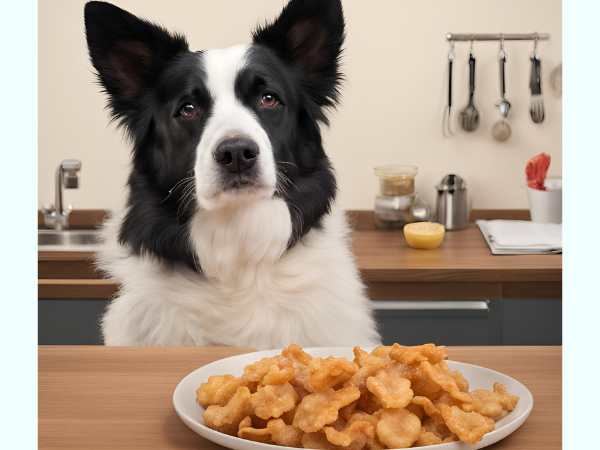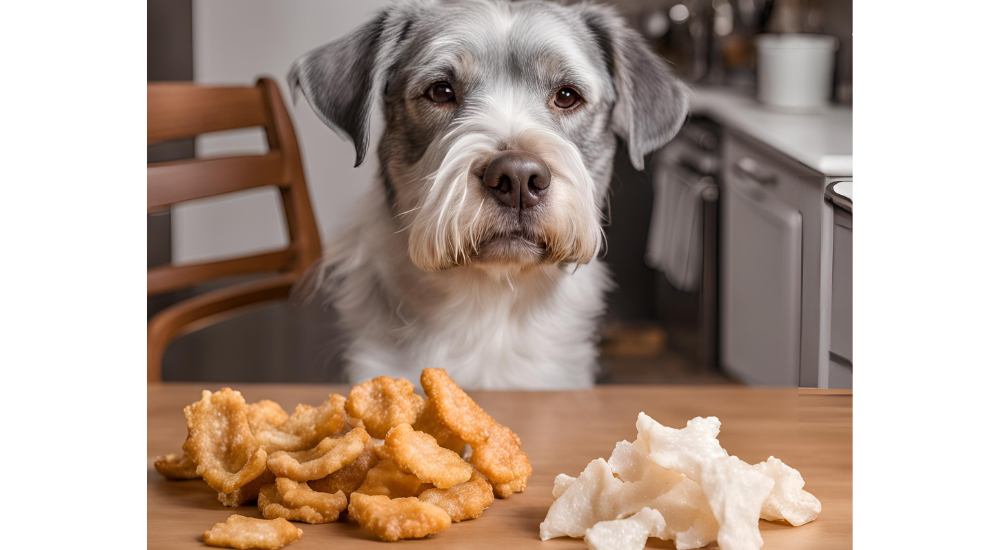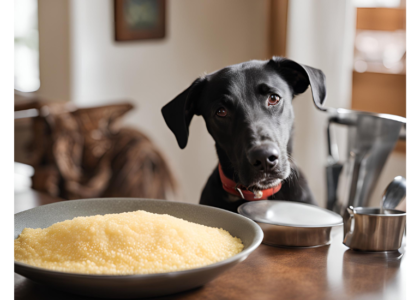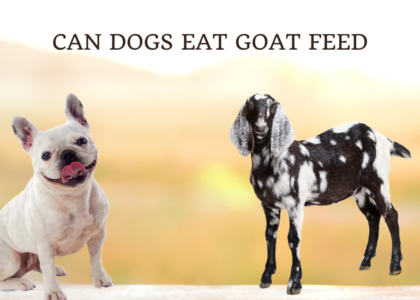Dogs should not eat pork rinds. They are high in fat and salt, which can harm dogs.
Pork rinds, a popular snack for humans, are not suitable for dogs. These crispy treats are high in fat and salt, posing several health risks to your furry friend. Consuming pork rinds can lead to obesity, pancreatitis, and heart issues in dogs.
The high salt content can cause sodium poisoning, leading to symptoms such as vomiting, diarrhea, and lethargy. Always opt for healthier, dog-friendly treats to ensure your pet’s well-being. Homemade dog treats or commercial options specifically designed for canines are safer choices. Always consult your vet before introducing new foods into your dog’s diet.
Table of Contents
Nutritional Value Pork Rinds For Dog
Many dog owners wonder if their furry friends can enjoy pork rinds. Understanding the nutritional value of pork rinds for dogs is crucial before offering this snack. While pork rinds might be a tasty treat for humans, it’s essential to examine their suitability for canine consumption.
Pork Rinds Nutritional Content
Pork rinds are primarily composed of fried pork skin. This crunchy snack is high in fat and calories. Here’s a breakdown of the common nutritional content found in pork rinds:
- Protein: Pork rinds contain a moderate amount of protein, which is essential for muscle development and repair.
- Fat: They are high in fat, particularly saturated fats, which can lead to weight gain and other health issues in dogs if consumed in large quantities.
- Calories: Pork rinds are calorie-dense, which may contribute to obesity in dogs if not moderated.
- Sodium: They often contain a high level of sodium, which can be harmful to dogs, leading to dehydration and other health problems.
Here’s a quick overview in a table format:
| Nutrient | Amount per 1 oz (28g) |
|---|---|
| Protein | 7g |
| Fat | 9g |
| Calories | 154 |
| Sodium | 500mg |
Given their high fat and sodium content, pork rinds may not be the healthiest snack for dogs. Overconsumption can lead to serious health issues.
Canine Dietary Requirements
Dogs have specific dietary needs to stay healthy. A balanced diet for a dog should include:
- Protein: Essential for muscle growth and repair. Common sources are meat, fish, and eggs.
- Fat: Provides energy and helps absorb certain vitamins. Healthy sources include fish oil and chicken fat.
- Carbohydrates: Offer energy and aid digestion. Sources include rice, sweet potatoes, and oats.
- Vitamins and Minerals: Necessary for overall health. These can be found in fruits, vegetables, and specially formulated dog foods.
Here’s a brief comparison of the nutritional needs of dogs versus the content in pork rinds:
| Nutrient | Dog’s Requirement | Pork Rinds |
|---|---|---|
| Protein | High | Moderate |
| Fat | Moderate | High |
| Carbohydrates | Varies | Low |
| Sodium | Low | High |
It’s clear that while pork rinds have some protein, their high fat and sodium content make them unsuitable for regular consumption by dogs. A well-balanced dog diet requires careful selection of foods that meet their nutritional needs without adding unnecessary risks.
Health Considerations
Many dog owners wonder if their furry friends can enjoy pork rinds as a treat. While pork rinds are a popular snack for humans, it’s crucial to consider the health implications for dogs. This section will explore the health considerations of feeding pork rinds to dogs.
Potential Benefits For Dogs
There are a few potential benefits of giving pork rinds to dogs:
- High in protein: Pork rinds contain a significant amount of protein, which helps build and repair tissues in dogs.
- Rich in fat: The fat content can provide a quick source of energy for active dogs.
- Crunchy texture: The crunchiness can help clean a dog’s teeth by removing plaque and tartar.
It’s important to note that while these benefits exist, they come with significant caveats. The protein and fat content of pork rinds can be beneficial, but only in very small amounts and infrequent servings.
| Benefit | Description |
|---|---|
| High in Protein | Supports muscle repair and growth. |
| Rich in Fat | Provides quick energy. |
| Crunchy Texture | Helps clean teeth. |
Potential Risks For Dogs
Feeding pork rinds to dogs can pose several risks:
- High salt content: Pork rinds are often seasoned with salt, which can lead to sodium poisoning in dogs.
- High fat content: Excessive fat can cause pancreatitis, a severe and painful condition.
- Artificial additives: Many pork rinds contain artificial flavors and preservatives that are harmful to dogs.
The risks associated with feeding pork rinds are significant. Even small amounts can lead to serious health issues.
| Risk | Description |
|---|---|
| High Salt Content | Can cause sodium poisoning. |
| High Fat Content | Can lead to pancreatitis. |
| Artificial Additives | Harmful to dogs’ health. |
Consult your veterinarian before introducing any new food to your dog’s diet. The potential risks often outweigh the benefits when it comes to pork rinds.

Digestibility And Digestive Health
Pork rinds are a popular snack among humans, but many pet owners wonder if they are safe for dogs. Understanding the digestibility and digestive health impact of pork rinds on dogs is crucial. This section will explore whether dogs can digest pork rinds and how these snacks affect their digestive system.
Pork Rinds Digestibility For Dogs
Dogs have different digestive systems compared to humans. This means some foods that are fine for us can be problematic for them. Pork rinds are high in fat and salt, which can be difficult for a dog to digest.
Here are some points to consider:
- High-fat content: Dogs do not process fat as efficiently as humans. High-fat snacks like pork rinds can cause digestive issues.
- Salt levels: Excessive salt is bad for dogs. Pork rinds often contain high levels of salt, which can lead to dehydration and other health problems.
- Artificial additives: Pork rinds may contain artificial flavors and preservatives. These additives can be harmful to dogs.
A breakdown of the typical components of pork rinds:
| Component | Impact on Dogs |
|---|---|
| Fat | Can lead to obesity and pancreatitis |
| Salt | Can cause dehydration and kidney issues |
| Artificial Additives | May cause allergic reactions or toxicity |
Effects On Digestive System
Feeding dogs pork rinds can negatively affect their digestive system. High-fat foods can cause pancreatitis, a painful and potentially life-threatening condition. Symptoms include vomiting, diarrhea, and abdominal pain.
Salt toxicity is another concern. Dogs are sensitive to high salt levels, which can lead to excessive thirst, urination, and even sodium ion poisoning.
Artificial additives can disrupt a dog’s digestive health. These chemicals can cause stomach upset, vomiting, and diarrhea.
Signs of digestive distress in dogs include:
- Vomiting
- Diarrhea
- Lethargy
- Loss of appetite
- Bloating
Monitor your dog’s health if they consume pork rinds. Consult your veterinarian for advice if they show any signs of digestive issues.
Feeding Recommendations
Many dog owners wonder if they can share pork rinds with their furry friends. While dogs can eat pork rinds, it’s essential to follow specific feeding recommendations to ensure their safety and health. This section covers safe ways to feed pork rinds to dogs and the importance of moderation and portion control.
Safe Ways To Feed Pork Rinds To Dogs
Feeding pork rinds to dogs requires careful preparation and consideration. Here are some safe ways to share this treat with your pet:
- Cooked and Unsalted: Always ensure pork rinds are fully cooked and free from salt. Raw pork can contain harmful parasites, while salt can lead to sodium poisoning.
- Small Pieces: Break the pork rinds into small, manageable pieces to prevent choking hazards.
- Free of Seasonings: Avoid pork rinds with spices, garlic, onions, or other seasonings that can be toxic to dogs.
Consider the following table for a quick reference:
| Preparation | Notes |
|---|---|
| Cooked | Eliminates harmful parasites |
| Unsalted | Prevents sodium poisoning |
| Small Pieces | Reduces choking risk |
| Unseasoned | Avoids toxic ingredients |
Following these safe feeding practices can help ensure that your dog enjoys pork rinds without adverse effects.
Moderation And Portion Control
Even safe foods can cause issues if given in excess. It’s crucial to practice moderation and portion control when feeding pork rinds to your dog. Here are some tips:
- Small Quantities: Offer pork rinds as an occasional treat, not a regular part of your dog’s diet.
- Monitor Your Dog: Watch for any signs of digestive upset, such as vomiting or diarrhea, after giving pork rinds.
- Caloric Intake: Keep track of the calories from treats to ensure they don’t exceed 10% of your dog’s daily caloric intake.
Use this guideline to determine appropriate portion sizes based on your dog’s weight:
| Dog Weight | Max Pork Rinds Per Day |
|---|---|
| Up to 10 lbs | 1 small piece |
| 10-20 lbs | 2 small pieces |
| 20-50 lbs | 3 small pieces |
| Over 50 lbs | 4 small pieces |
By following these moderation and portion control tips, you can keep your dog healthy while letting them enjoy pork rinds occasionally.
Frequently Asked Questions
Can Dogs Safely Eat Pork Rinds?
Dogs should not eat pork rinds. They are high in fat and sodium. These can cause digestive issues and pancreatitis in dogs.
Are Pork Rinds Toxic To Dogs?
Pork rinds are not toxic but are unhealthy for dogs. High fat and salt content can harm their health. Avoid feeding them.
What Happens If My Dog Eats Pork Rinds?
If your dog eats pork rinds, they may experience vomiting, diarrhea, or pancreatitis. Monitor for symptoms and consult a vet.
Are There Healthier Alternatives To Pork Rinds For Dogs?
Yes, healthier alternatives include plain, cooked meats or dog-specific treats. These options are safer and better for their health.
Conclusion
Feeding your dog pork rinds isn’t recommended. They can cause health issues like obesity and pancreatitis. Always opt for healthier, dog-friendly snacks. Consult your vet for the best dietary advice. Your dog’s health should always be a priority, ensuring a happy and long life.










